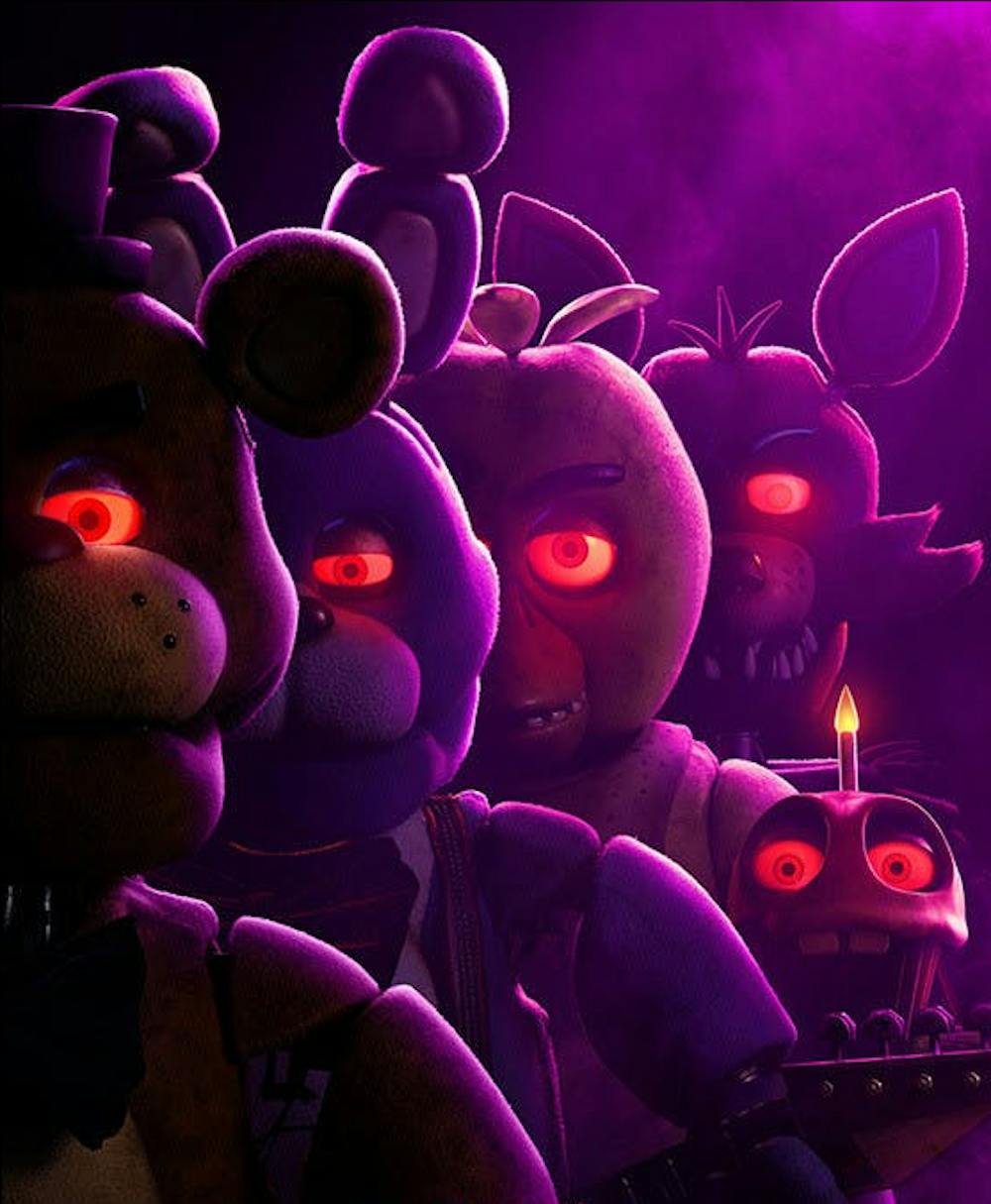“Five Nights at Freddy’s,” the newest horror film to hit theaters this season, pulled in a whopping $130 million during its opening weekend, unseating 2018’s “Halloween” as horror producer Blumhouse’s largest box office opening. Despite the massive haul, “Five Nights at Freddy’s” offers a bland, largely unscary experience, leaving fans of both the source material and horror genre more broadly with much to be desired.
Writer and director Emma Tammi’s newest film follows Mike Schmidt (Josh Hutcherson), a security guard hired to work the night shift at the now-abandoned Freddy Fazbear’s Pizzeria. What starts as an easy payday to care for his sister Abby (Piper Rubio) soon turns into a nightmare, as horrific animatronics begin hunting the restaurant for blood.
“Five Nights at Freddy’s” had so much going for it: a terror-fueled, cult classic game with deep lore to use as source material, a director coming off a wildly successful entry in the horror genre with “The Wind” and a group of monsters so iconic that they’ve spawned additional games, graphic novels and collectible toys. On top of it all, the movie boasts a trio of bonafide stars, featuring Josh Hutcherson, Elizabeth Lail and Matthew Lillard.
Despite having so much to work with, Tammi squanders much of the film’s potential with far too many missteps. For a game renowned for its creepy atmosphere and jumpscares, the film adaptation surprisingly lacks both. One reason for this might be the studio’s decision to keep the film at a PG-13 rating. Without this limitation, Tammi would have had much greater freedom to dial up the gruesome deaths and nightmarish images that the film lacks.
The film focuses on Mike’s repressed trauma over the disappearance of his younger brother and his struggle to maintain custody of his sister. While this narrative adds some emotional weight to the film’s characters and story, it ultimately detracts from any opportunity to build prolonged tension.
Part of what made the original game so effective was how trapped players felt in the decrepit ruins of Freddy Fazbear’s. Stuck within the confines of the restaurant’s security room, players’ survival hinged on meticulous surveillance of the security cameras and the hope that animatronic monsters wouldn’t find them before the night was over. Tammi does nothing to replicate this desperate need for survival. Instead, the film’s focus on Mike’s family issues seems to actively pull its characters away from Freddy’s at any chance it gets.
Breaking any potential for tension, Tammi’s lead finds himself in suburbia fighting for custody of his sister just as Freddy’s animatronics begin to wreak havoc. For a film titled “Five Nights at Freddy’s,” Tammi seems to hate setting the film at its namesake location.
For fans of the game, what might ultimately make or break their experience is the film’s depiction of Freddy, Chica and the rest of their mechanical friends. Here, “Five Nights at Freddy’s” finds some success in its faithful and creepy recreation of the game’s antagonists.
Unfortunately, much of this creep factor is lost due to Tammi’s lack of understanding of how to best use these iconic characters. Rather than portraying the film's animatronic monsters as formidable adversaries, Tammi opts for a hastily crafted origin story that casts them as misunderstood creatures more inclined to offer a comforting hug than pose any genuine threat. Tammi’s loud, sluggish villains feel like a far cry from the game’s quick, ever-threatening one. Anyone capable of moving at a walking speed could outrun Tammi’s animatronic antagonists.
Tammi ultimately disappoints with a horror film that lacks any genuine scares and frequently becomes entangled in unnecessary plot details. For some moviegoers, “Five Nights at Freddy’s” might be five too many.





